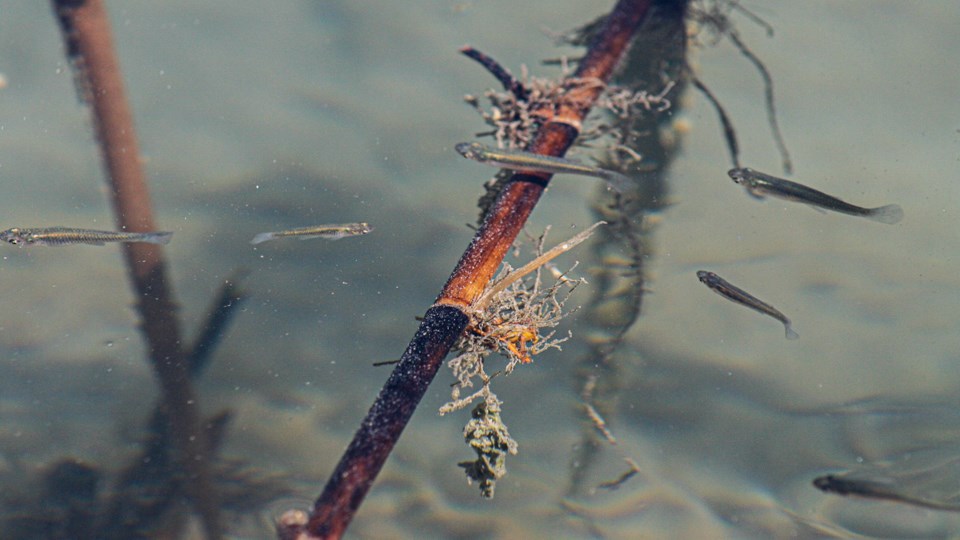
NPS/J. Jurado 
Photo courtesy of Dr. Sean Graham Big Bend GambusiaGambusia gaigeiThis is Big Bend's most famous fish. The only wild population of this fish exists in a protected pond located near Rio Grande Village. All present populations of Big Bend gambusia consist of descendants of three fish (two males and one female) taken from the declining Rio Grande Village population in 1956. The major threats to Big Bend gambusia and other desert spring fishes include habitat loss from declining spring flows and reduced surface waters, competition with introduced species, and hybridization with introduced fishes. To learn more about the park's efforts to protect this endangered fish, read Big Bend Gambusia: A Fish Story. 
CatfishFive species of catfish are found in the Rio Grande within the park and they consitute the majority of fish that are caught during recreational fishing. Named for their prominent barbels, which resemble a cat's whiskers, catfish are negatively buoyant, which means that they will sink rather than float due to a reduced gas bladder and a heavy, bony head.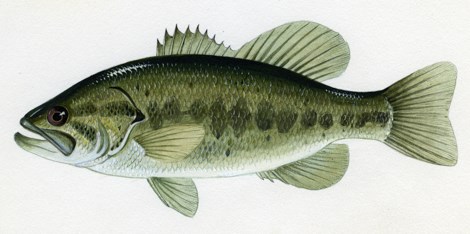
Largemouth BassMicropterus salmoidesLargemouth bass live mainly in lakes and rivers. The optimal habitat for this species include slow-moving, quiet, clear waters with soft shallow soil. Dense vegetation is ideal for finding prey. They rely heavily on their sight and hearing to locate their prey and feed. Adult largemouth bass have few predators outside of birds and humans. 
Longnose DaceRhinichthys cataractaeThese fish are primarily nocturnal feeders with dark-adapted vision. They feed on bottom-dwelling insects and are thought to locate prey by smell, using their barbels to probe into the soil. Their diet includes black flies, midges, aphids and cicadas. 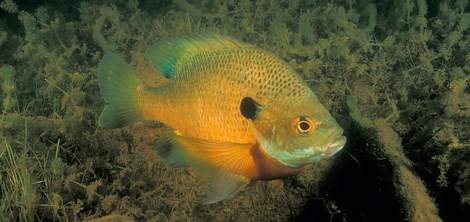
BluegillLepomis macrochirusBluegill are most active at dawn. During the day they stay hidden undercover and they move to shallow water to spend the night. The very small mouth of this fish is an adaptation that comes from eating small prey. They are carnivores, eating invertebrates such as snails, worms, shrimp, aquatic insects and zooplankton. 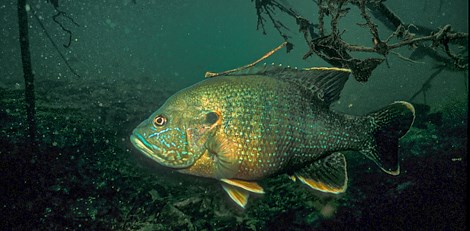
Green SunfishLepomis cyanellusThis species has a wide tolerance for many aquatic conditions, one of the reasons they have been successfully introduced elsewhere. It is an aggressive species, and will outcompete native species. They are mainly solitary and active during the day. Their most common predators are largemouth bass and channel catfish. Their average length is only 12.5 to 15.5 centimeters. 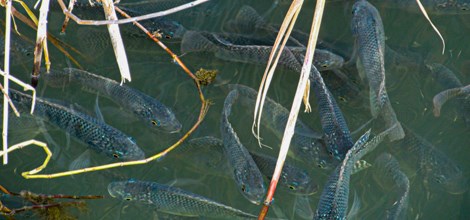
NPS/J. Jurado Blue TilapiaOreochromis aureusInvasive spcies Originally introduced to the U.S. as a method of aquatic plant control, the blue tilapia has since become a pest. It is considered to be a competitor with native species for spawning areas, food and space. Many organizations now warn against the further spread of this species. Blue tilapia have spread to many drainages across Texas and reproducing populations are found in the Rio Grande Village ponds within the park. |
Last updated: December 21, 2020
Success
Thank you. Your feedback has been received.
Error
alert message

